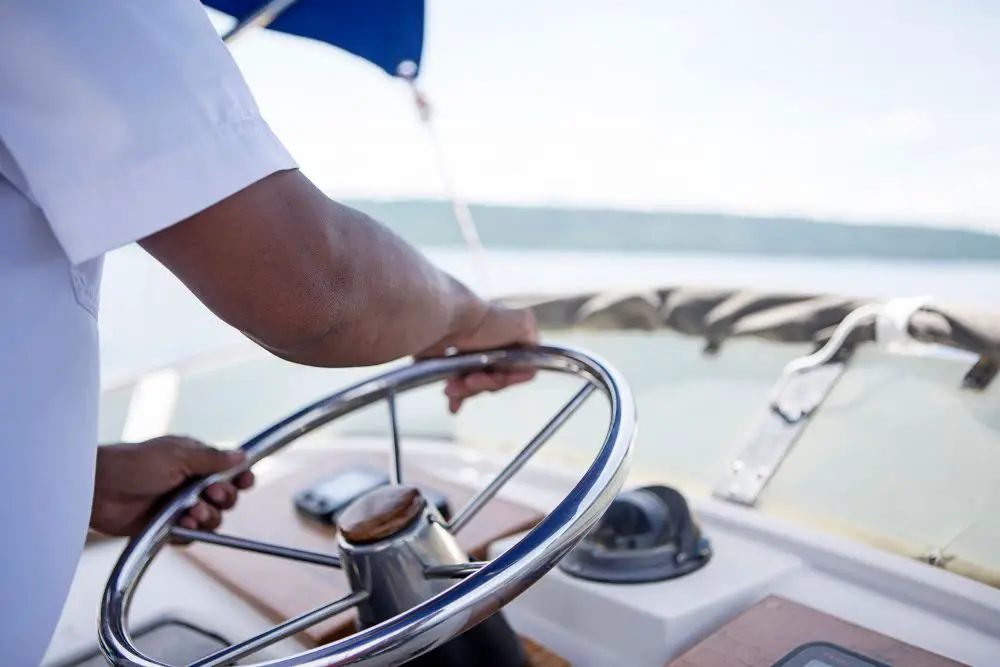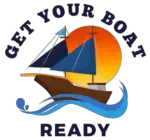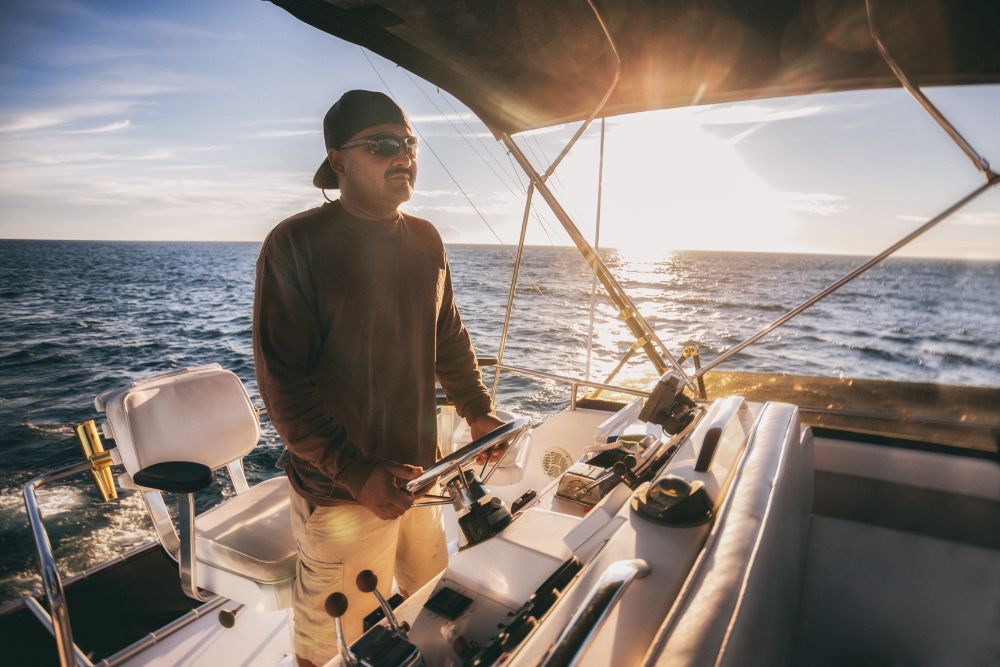There’s something about being out on the open water that just screams summertime. Whether you’re headed out for a day of fishing or just want to enjoy some time on a boat, it’s important to understand the basics of driving one. Let’s break down how boats work and how you can get started driving one today.
Basic Boating Terminology
Before we jump into how to drive a boat, it’s important to understand some basic terminology. Here are a few terms you should familiarize yourself with before getting behind the wheel:
- Hull – This is the body of the boat itself. It’s what keeps you afloat and provides structure to the vessel.
- Keel – The keel is a central beam running along the bottom of the hull. It provides stability and keeps the boat from tipping over.
- Rudder – The rudder is a flat piece of wood or metal attached to the back end of the boat. It helps steer the vessel.
- Propeller – The propeller is a large fan that sits at the back of the boat and propels it through the water.
- Tiller – The tiller is a long handle connected to the rudder. It’s what you use to steer the boat.
The Basic Mechanics Of Driving A Boat
Many people see driving a boat as a daunting task that is very complicated. In all honesty, it’s not as complicated as one might think. Sure, there are a few more things you have to worry about than just hitting the gas and steering, but it’s not rocket science. Let’s break down the basics of driving a boat so that you can be confident the next time you’re behind the wheel.
The Rudder
The first thing you need to understand is the rudder. The rudder is what steers the boat and is controlled by the tiller (usually located on the right side of the boat). To turn the boat to the left, you push the tiller away from you. To turn the boat to the right, you pull the tiller towards you. It’s really that simple.
The Gears And Throttle
Next up are the gears and throttle. The throttle controls how fast or slow the boat goes and is usually located on the left side of the boat. You simply push down on the throttle to make the boat go faster. To make it go slower or stop, you let off of the throttle.
As for gears, boats usually only have Forward and Reverse gears. To make it go forward, you push down on the gear lever until it clicks into place. To put it in Reverse, you do the same thing but pull up on the lever instead of pushing down.
The Trim Tabs
Last but not least are trim tabs. Trim tabs help adjust how high or low your bow (front) sits in relation to your stern (back). If your bow is too high, it creates drag and makes your boat harder to control and slower. If your bow is too low, it can cause your propeller to come out of the water, making your boat slower and harder to control.
To raise your bow, you push down on your trim tab switches (usually located near your throttle). To lower your bow, you pull up on your trim tab switches.
Now that we’ve gone over some basic terminology and mechanics let’s talk about how you can actually get started driving a boat.
Section 1 – Get Your Boat Moving
There are few things more freeing than being out on the open water, with the wind in your hair and the sun on your face. But before you can enjoy that feeling, you must understand how to drive a boat. Here’s a quick overview of the mechanics of driving a boat so that you can get out on the water as soon as possible.
Step 1: Conduct Safety Checks
Before doing anything else, conducting some basic safety checks is important. Make sure that everyone on board is wearing a life jacket and that each person has a life jacket onboard. Check to see that all of the safety equipment is in working order, including fire extinguishers, flares, and first-aid kits. Look around the boat to ensure that there is nothing loose that could fall and injure someone or damage the boat. Once you’re confident that everyone and everything is safe, you can move on to starting the engines.
Step 2: Start Your Engines
Depending on the type of boat you’re driving, you may have one or two engines. If you have two engines, they should be started simultaneously. Begin by opening the throttle about one-quarter of the way. Then move to the engine compartment and start each engine according to its owner’s manual. Once both engines are running, return to the throttle and slowly increase speed until both engines are at about 1/3 power.
Step 3: Leave The Harbor
Now that your engines are running smoothly, it’s time to head out of the harbor. Remember to go slowly at first; even if you’re an experienced driver, it takes a few minutes to get used to a new boat. As you leave the harbor, keep an eye out for other boats and obstacles in your path. Once you’re clear of any hazards, you can increase your speed and enjoy the ride!
Section 2 – Driving Out To Deep Water
Now that you have made it this far, it’s time to venture out into deep water. Here are a few things to remember as you make your way offshore.
Step 1: Trim Your Bow Down
Trimming your bow down is the first step in driving out to deep water. This means adjusting the angle of your bow so that it points down into the water. By doing this, you’ll reduce the amount of drag on your boat and make it easier to move through the water. You can trim your bow down by adjusting the trim tabs on your boat. These are usually located near the stern (back) of the boat.
Step 2: Approach The Swells At Right Angles
As you’re headed out to deep water, you’ll likely encounter swells (large waves). When you do, it’s important to approach them at the right angles. This will help ensure that your boat isn’t turned sideways by a wave and capsized (flipped over). To do this, simply keep an eye on the direction of the swells and adjust your course accordingly.
Step 3: Carefully Control Your Speed
One of the most important aspects of driving a boat is controlling your speed. You need to be careful not to go too fast or too slow. If you go too fast, you run the risk of hitting something and damaging your boat. If you go too slow, you may be unable to maneuver effectively and could get pulled under by a swell. Therefore, it’s important to find a happy medium when it comes to your speed.

Section 3: Steering A Course
Steering a course is the process of aligning the boat’s heading in the desired direction of travel. The rudder is used to turn the boat, and the tiller is used to steer. The helm is located at the stern of the boat, and the bow is located at the front.
Step 1: Set A Course To Steer
Determining where you want to go is the first step in steering a course. You can use a map or GPS to help you with this. Once you know where you’re going, you need to set a course. To do this, align the boat’s heading with the desired direction of travel. Make sure to account for any current or wind conditions that may affect your course.
Step 2: Adjust Your Speed And Trim
Once you have set a course, you need to adjust your speed and trim. The speed of your boat will affect how far you can turn without capsizing. The trim of your boat will affect how well it handles turns. If you are turning too sharply, you may need to adjust your trim.
Step 3: Check That You Remain On Course
It is important to frequently check that you remain on course. This is especially important if other boats are around or the conditions change. To do this, simply look back at where you started from and compare it to your current location. If you are not on the course, adjust your heading accordingly.
Section 4: Driving Home
Now that you have had a great day out on the water and are ready to go home, there are a few things to keep in mind.
Step 1: Trim Your Bow Up
The first step in driving a boat is to trim your bow up. This means that you need to adjust the angle of the front of the boat in relation to the water. The reason you want to do this is that it will help to prevent the bow from dipping into the water and creating drag. You can adjust the trim by using the Up Trim and Down Trim buttons on the throttle.
Step 2: Never Drive Full Throttle
One of the most important things to remember when driving a boat is never to drive at full throttle. Doing this can put a strain on the engine and cause damage to the propeller. Instead, you should gradually increase the throttle as you build up speed. This will help prolong the life of your engine and keep your boat running smoothly.
Step 3: Try And Stay On The Back Of The Wave
Another important tip for driving a boat is to try and stay on the back of the wave. This means that you should try to keep the stern (rear) of the boat higher than the bow (front). This will help keep your boat stable and prevent it from capsizing. You can adjust your position by using the Up Trim and Down Trim buttons on the throttle.
Section 5: Close Quarter Maneuvering
Close quarter maneuvering is when you need to make tight turns in order to avoid obstacles or other boats. It can be a challenging skill to master, but it is important to know how to do it.
Step 1: Check The Wind And Current
The first step to driving a boat is to check the wind and current. You want to make sure that you’re heading in the right direction and that the conditions are favorable for driving. If the wind and current are both against you, it will be more difficult to control your boat. However, if you understand the conditions well, you can use them to your advantage. For example, if the wind is blowing in the same direction as you’re going, it can help you move faster.
Step 2: Use Your Motors More Than Your Wheel
Another key element of driving a boat is using your motors more than your wheel. This is because your motors provide more power and allow you to control your speed more effectively. When you’re driving in open water, you can use your motors to control your speed and keep your boat moving in a straight line. However, when you’re driving in close quarters, such as in a marina or around other boats, it’s important to use your wheel to control your movement. This is because it’s easy to accidentally hit something when you’re relying solely on your motors.
Step 3: Take It Slow
Last but not least, it’s important to take things slow when you’re driving a boat. This is because boats are large and can be difficult to maneuver. You also want to avoid making any sudden movements, as this can cause problems for other boats around you. If you take things slow and keep a steady hand on the wheel, you’ll be able to navigate without any issues.
In Conclusion
Now that you know some basic information about boats and how they work, it’s time to get out there and enjoy some time on the water! Just remember to take things slowly at first and always be aware of your surroundings when driving. With a little practice, you’ll be cruising around like a pro in no time!



